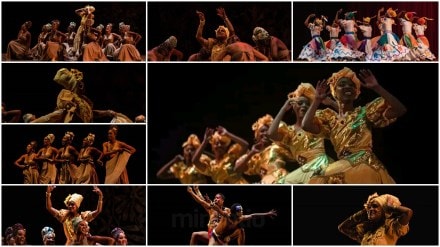The Cuban National Folkloric Ensemble, embodying the essence of Cuban identity and culture, is currently making its inaugural visit to India as part of Cultural Diplomacy. Arriving on November 21, the ensemble’s stay extends until the month’s end, and it is actively participating in the National Festival of Folk Music and Dance, an event organized by the Indian Council for Cultural Relations (ICCR) under the Ministry of External Affairs. “This cultural exchange seeks to forge stronger bonds between the nations, employing the universal language of art,” said a senior diplomat.
Where will they perform?
The Ensemble’s tour encompasses diverse locations, with performances scheduled in Shillong, Meghalaya, on November 24 at the U Soso Tham Auditorium, followed by an appearance in Kolkata, West Bengal, on November 26 at the Rabindranath Tagore Center. Delhi is also in the spotlight, hosting the ensemble on November 29 and 30 at the Lotus Temple Auditorium and Delhi University, respectively.
According to a top diplomat, “led by dancer and choreographer Leiván García, the Ensemble’s program promises a comprehensive exploration of Cuban musical and dance genres, spanning from traditional to contemporary expressions. The repertoire includes titles such as Eshu, Ayabbá, Ogún, Yemayá, Obatanero, and Mambo. The performances are not merely artistic showcases but endeavors to spotlight the diversity of Cuban cultural expressions, incorporating scenes from traditional theatre.”
Background
Established in 1962, the National Folkloric Ensemble has evolved beyond being a mere dance group. Under the steadfast leadership of Leiván García, it stands as a symbol of Cuban identity and culture, serving as a guardian of popular and traditional Cuban expressions rooted in African heritage for over sixty years.
This journey traces back to a time when conditions aligned, leading to the creation of an institution dedicated to the preservation of Cuban dance and musical roots. The group’s mission, solid since its inception, revolves around contributing to the rescue and rehabilitation of Cuban cultural elements. This involves a diligent process of research, study, and promotion of the highest artistic values.
The Ensemble’s commitment extends beyond preserving tradition; it embraces the demands of modern theatrical techniques. The Folkloric Theatrical Art style, characterized by its scenic and aesthetic effectiveness, has not only captivated national audiences but has also left an indelible mark on stages across Europe, Africa, America, and beyond.
Comprising individuals from diverse professions, the ensemble’s dancers, mainly city residents, carry within them the essence of Cuban folklore inherited through generations. Their performances have been witnessed by audiences in over 80 countries across continents, earning the group prestigious awards such as the Golden Tonel (Dijon, France 1975), Silver Necklace (Dijon, France 1975), Golden Temple (Agrigento, Italy 1988), Neighbourhood Award (2019), and Excellence in the Arts Award (2020).
In India
This cultural exchange transcends language and geographical boundaries, emphasizing the shared appreciation of diverse cultures. It serves as a bridge, connecting the rich heritage of Cuba with the cultural tapestry of India, contributing to a global dialogue that highlights the pivotal role of cultural exchange in building mutual respect and understanding. Through this shared experience, individuals from different corners of the world find common ground, celebrating the richness and diversity of human expression. The significance lies not just in the artistic presentation but in the connections forged, creating lasting impressions that extend beyond the stage into the fabric of international relations.
